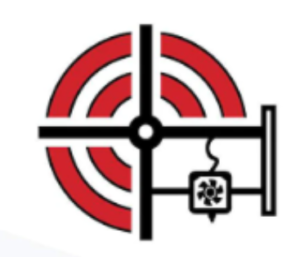Configure Price Quote (CPQ) software automates the process of tailoring goods and/or services to customer specifications, determining the price of the product configuration, and providing the customer with a quote for that configuration. Mac Cameron, the founder and CEO of Spokbee, a company in the CPQ space, has, fittingly, slightly modified the concept to reflect what he feels differentiates the company’s approach to CPQ:
“We think of it as a configure-price-deliver software,” Cameron told me. “Spokbee places a heavy emphasis on product visualization with a mind towards customization. Our platform allows us to launch product configurators onto customers’ websites very quickly, enabling mass customization of the relevant products at a rapid pace.”
The Spokbee platform achieves that by leveraging a single source of truth (SSOT): the creation of a repository for all the data associated with a specific CAD file. The differentiator is the rate at which the Spokbee configurator accomplishes that task, leading to Cameron’s emphasis of Spokbee’s ability to “deliver.”
While everyone familiar with additive manufacturing (AM) is likely also aware of CPQ software, Cameron notes that Spokbee’s customer base is mostly represented by legacy manufacturers. However, Cameron’s background in AM — he started his career as an applications engineer at Stratasys — has him convinced that AM and Spokbee’s technology are a perfect match. For instance, this is what led the company to become a member of America Makes, which is also Spokbee’s newest customer.
Cameron thinks now might be exactly the right time for the company to start making deeper inroads into the AM industry:
“Where we’re trying to catch the wave, and I think this is coming soon, is with the military, which has been quick to adopt AM, but at the same time, about as slow as the rest of industry in terms of granting formal approval to 3D printed parts,” said Cameron. “That makes sense when it comes to mission-critical parts, but the approval process has largely been the same whether the parts are mission-critical, or not.
“However, there is a push happening to pre-approve a family of products, as opposed to one singular product. The example I like to use is, imagine you’re on a submarine, and your broom-handle attachment breaks. It’s not a critical application, so in theory, you should be able to 3D print the replacement part without a lengthy approval process.
“Now, with our configurator, the military could pre-approve all the variations of handle attachments in use across the DoD, so at any given point, anyone in the DoD with access to the digital inventory and a 3D printer could produce the handle attachment that they need.”
This certainly does seem to be the trajectory that the DoD is on, in terms of its AM adoption. It’s easy to imagine the U.S. Army’s push to incorporate 3D printing into a ramp-up of organic drone production capabilities, utilizing Spokbee to facilitate faster, less complicated drone iteration.
For the AM industry as a whole, moreover, Cameron suggested that he believes that one reason why the industry hasn’t been as quick to embrace CPQ software as he may have initially expected, is because machine OEMs have been more concerned up to this point with selling machines rather than with selling applications. On the other hand, it has been increasingly clear over the last several years that OEMs have begun to realize that selling applications is, ultimately, the only way to sell machines.
Thus, as OEMs become more explicitly focused on selling their machines by selling the applications those machines are best suited for, the AM-specific appeal of a product like Spokbee should become more obvious:
“Over time, I think it’s going to be apparent that having a product configuration solution is going to increase machine utilization, and in turn, increase sales,” Cameron explained. “We have a handful of 3D printing customers currently, and they’re all extremely satisfied with the capabilities that Spokbee opens up for them.
“Especially in the orthotics and prosthetics space, it has impacted sales to the point where doctors want to bring everything in-house. They don’t have design teams, and they don’t want to hire them, so that’s exactly the sort of problem that we’re able to address.
“More generally, Spokbee exists for any scenario where there’s a quote backlog. When manufacturers can’t get quotes back to their potential customers at a quick enough pace, that’s lost revenue.”
And, in addition to enabling enterprises to more effectively handle their existing business, Spokbee could serve as a generator of new business, in and of itself:
”The experience of using the platform encourages a sale right on the customer’s site,” noted Cameron. “Users can directly see what they’re getting, and ensure it’s exactly what they want, in advance. I’ve seen this myself, just at trade shows, where attendees could use our software to design a custom 3D printed ring, with their lucky number on it, for instance.
“It’s just a demonstration part essentially, but it shows people firsthand how straightforward the platform is to use, and it can be printed in less than five minutes or so. That’s a perfect amount of time for a sales pitch. A lot of the people who come to these shows still haven’t actually used the printers, themselves, so this is a great opportunity to introduce them to the process, and familiarize them with the concept of mass customization. Everyone loves seeing parts come off of the build tray.”
One market that I think Spokbee is ideal for is tariff engineers. The practice of redesigning parts in ways that can skirt import duties — perfectly legally — has been in the spotlight lately, unsurprisingly.
As the new international tariffs regime becomes permanently embedded into global supply chains, the demand for tariff engineering is likely to far outpace the number of workers who actually specialize in that skill. Combining 3D printing with a product configurator that has been optimized for the purpose seems like a monumental opportunity for the AM industry to capitalize on the ongoing disruptions to world trade.
In any case, whatever the platform is capable of now, Spokbee is just getting started:
“Two or three years ago, when we started, I was thinking, man, we might only have like six months to do this, otherwise somebody else is gonna get to it first. But manufacturing moves slow,” said Cameron, laughing. “It’s allowed us to keep getting better, though, even if we still have a lot of work ahead of us. I know we’re still only scraping the surface in terms of what this technology can do.”
Images courtesy of Spokbee
Subscribe to Our Email Newsletter
Stay up-to-date on all the latest news from the 3D printing industry and receive information and offers from third party vendors.






